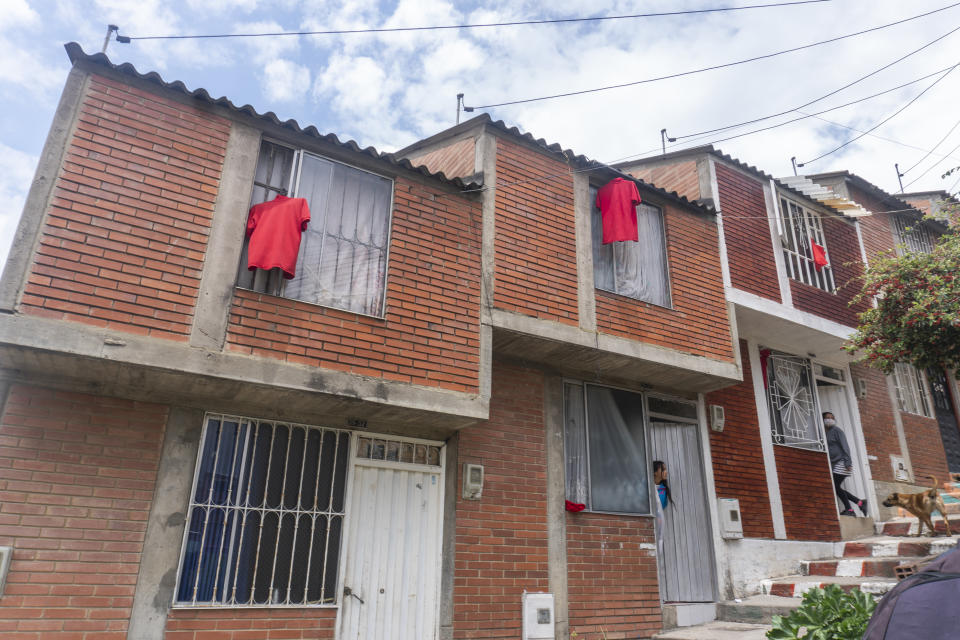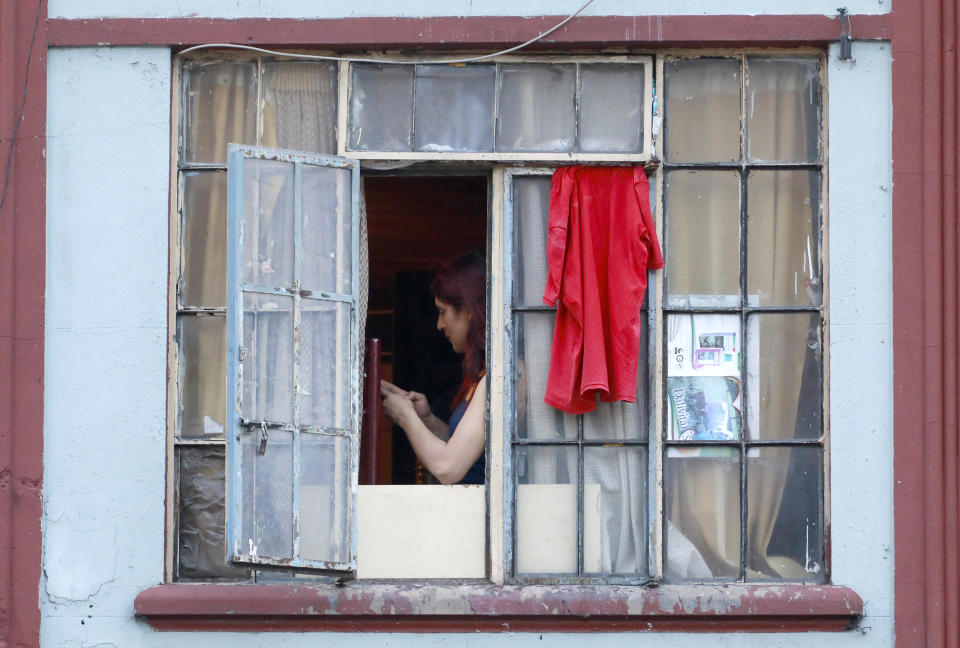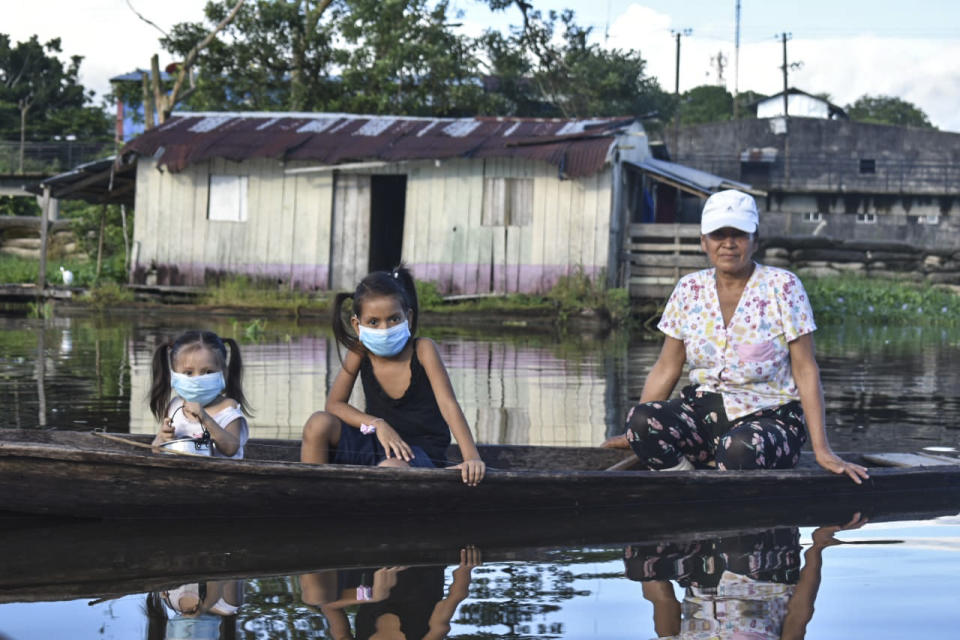Dire reason for red cloths outside homes
As the coronavirus spread throughout the world, it left a trail of destruction and residents in Colombia were forced to quite literally wave red flags in a desperate cry for help.
South America is the new epicentre of the coronavirus, however parts of Central America like Mexico are also ravaged by the virus, and of course the United States still has the most confirmed cases of COVID-19 in the world.
Just outside of Colombia’s capital of Bogota, red cloths are seen flying from windows in Soacha and the idea behind the flags have spread to other parts of the country.

Colombia enacted a mandatory lockdown in March, forcing people out of their jobs and not being able to support themselves or their families, decimating the country’s already fragile economy.
Mayor of Soacha, Juan Carlos Saldarriaga, had the idea to use the red flags to identify those in the community who need help.
“It is important to highlight that the idea initially is for neighbours to support each other by providing food or donations to those who need it most in the sector,” the mayor said according to Alcaldía de Soacha on Facebook.
“If you see a red rag on your neighbour’s door, it means a call for solidarity.”
The symbol for help began to spread to Bogota, and then all across the country, according to Al Jazeera, and people are using red items from clothing to rags to fly as their flag.

Colombia has more than 11,000 confirmed cases of COVID-19, and more than 460 related deaths.
However, some people are still waiting to receive food, and Mayor Saldarriaga said back in April there were entire neighbourhoods in Soacha where every home bore a red flag.
Flags of other colours are also flying, indicating other issues a household is facing amid the pandemic.
Colombia Director for Action Against Hunger, John Orlando told Al Jazeera in April blue flags symbolise a need for medical help, while black signifies someone is suffering from some form of violence.
“The needs are going to continue and most certainly increase in the coming weeks and months,” Mr Orlando said.
More than 500km from Bogota in Florencia, Mayor Luis Antonio Ruiz said more than 15,000 families had received grocery bags when speaking with the Washington Post earlier in May.
In Florencia, people are also flying the red rags, however Mayor Ruiz admitted the local government cannot help everyone, without help from higher up, nor could it be expected for people to remain in their homes while they go hungry.
However, the government has once again extended the quarantine until May 3.
“Perhaps we will have one of the longest periods of mandatory preventive isolation in the world, but we have been doing it responsibly, gradually,” President Iván Duque said according to the Bogota Post.

Come June, Colombia is set to enter a new phase of restrictions, which would mean different measures across the country – with local authorities doing what is best depending on the situation.
Colombia shares borders with Venezuela, Ecuador, Peru and Brazil and on May 15, Colombia upped their anti-virus measures at the Brazil border.
Cardboard coffins and missing people: Chilling details on country's REAL death toll emerge
The outbreaks which have seen Australia reach 100 coronavirus deaths
Colombian President Duque deployed the military to its border with Brazil after a surge of COVID-19 cases.
The coronavirus has spread to indigenous communities in the Amazon and about 8,000 indigenous people live near the Colombian border town of Leticia, where cases have shot up in recent weeks.

There’s not enough protective equipment for agents who enter indigenous territories or meet with native people in cities in Brazil.
Necessities like kerosene and gasoline are in short supply. Food deliveries only began last week — a month after indigenous people were instructed to remain in their villages — and remain vastly insufficient.
The Associated Press spoke to four agents who work with indigenous peoples in the farthest reaches of Brazil’s Amazon, and they were unanimous in their conclusion: The national Indian foundation, known as FUNAI, is hardly doing anything to coordinate a response to a crisis that could decimate ethnic groups.
At least 88 indigenous people have already died of COVID-19 in the Amazon, according to a tally by the Brazilian indigenous organisation APIB that includes health ministry figures and information from local leaders.
The count is likely higher, because hospitals often don’t use patients’ indigenous names when admitting them.

Brazil now has the second highest number of coronavirus cases in the world, behind the United States and surpassing previously hard hit countries like Spain, Italy and the initial epicentre – China’s Hubei province, Wuhan.
Experts have long feared the virus numbers in South America are probably much higher than what is being reported due to the lack of testing.
Just like previous epicentres, hospitals in the region are overwhelmed and experts are warning the death toll could be considerably higher, as it is feared people are dying in their homes.
A morbid solution to aid hospitals struggling with a surge in COVID-19 deaths was proposed by a Bogota-based advertising firm.
ABC Displays created a cardboard hospital bed which could then be repurposed as a coffin when a patient dies.
"We developed it because of the situation caused by COVID-19 in the world because we realised that there was a lack of hospital beds," the company's manager, Rodolfo Gomez told EFE.
− With Associated Press.
Do you have a story tip? Email: newsroomau@yahoonews.com.
You can also follow us on Facebook, Instagram and Twitter and download the Yahoo News app from the App Store or Google Play.




